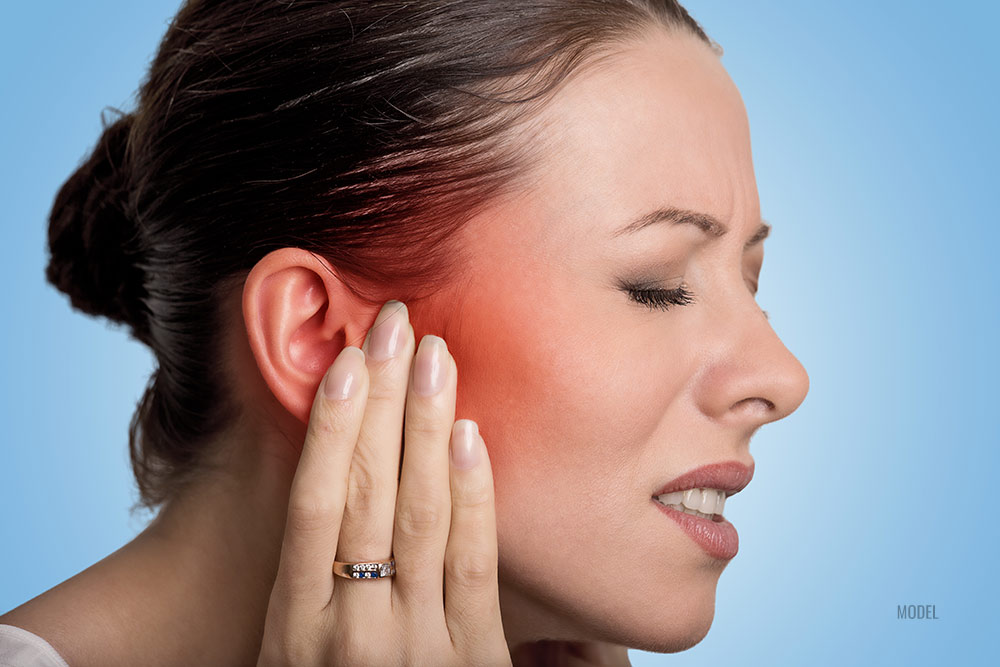5 Min Read:
Temporomandibular Joint (TMJ) disorder or dysfunction (TMD) can manifest in various ways, from jaw pain to headaches, and often impacts the daily life of the person experiencing this condition. Diagnosing TMJ disorder involves a comprehensive approach that combines clinical evaluation and advanced diagnostic technologies.

In this explorative blog, we’ll unravel the complexities of TMJ disorder, shed light on how you can identify its signs, and review the technologies that aid in obtaining an accurate diagnosis.
Understanding the Symptoms of TMJ Disorder
TMJ disorder involves dysfunction of the temporomandibular joint, which connects the jaw to the skull. The symptoms can be diverse, often overlapping with other conditions. Recognizing these signs is the first step in seeking a diagnosis.
- Jaw pain and tenderness: TMJ disorder commonly presents as pain or tenderness in the jaw joint and surrounding muscles.
- Limited jaw movement: There can be difficulty or discomfort while chewing, talking, or opening the mouth fully.
- Clicking or popping sounds: People can hear audible sounds, like clicking or popping, when moving the jaw.
- Headaches and ear pain: TMJ disorder may cause headaches, ear pain, or a feeling of fullness in the ears.
Clinical Evaluations and Diagnostic Technology
Diagnosing TMJ disorder involves a combination of clinical assessments, patient history, and advanced imaging technologies.
- Clinical evaluation by a specialist: A thorough examination by a dental or medical professional specializing in TMJ disorders is the starting point. The specialist gathers valuable information to assess jaw movement, muscle tenderness, and joint sounds.
- Dental and medical history: Understanding a patient’s dental and medical history is essential. Trauma, teeth grinding (bruxism), arthritis, or habits like nail-biting can contribute to TMJ disorder.
3 TMJ Imaging Technologies
Advanced imaging technologies play a pivotal role in visualizing the temporomandibular joints and identifying structural abnormalities contributing to TMJ disorder.
The following three modalities can help your physician or dentist diagnose and classify TMJ dysfunction:
- Cone Beam Computed Tomography (CBCT): CBCT provides detailed 3D images of the temporomandibular joints. This technology offers precise views, aiding in the assessment of joint structure, position, and potential abnormalities.
- Magnetic Resonance Imaging (MRI): MRI is valuable for assessing soft tissues around the TMJ, including muscles and ligaments. It provides detailed images without radiation exposure.
- Panoramic X-rays: Panoramic X-rays capture a broad view of the oral structures, including the jaw joints. While not as detailed as CBCT or MRI, it provides an overview for initial evaluation.
Emerging TMD Diagnostic Technologies
Innovations continue to shape the landscape of TMJ disorder diagnosis. New technologies offer enhanced precision and efficiency in identifying and understanding the complexities of TMJ-related issues.
- Joint Vibration Analysis (JVA): JVA records vibrations in the temporomandibular joints during movement. Changes in these vibrations can provide insights into joint function and abnormalities.
- Electromyography (EMG): EMG measures muscle activity around the jaw joints. Abnormal muscle patterns may indicate issues contributing to TMJ disorder.
After a Diagnosis of TMJ Disorder
Once TMJ disorder is diagnosed, collaborative efforts between dental or medical specialists and patients are crucial for effective management. Treatment plans for TMD may include lifestyle modifications, various conservative treatments, and, in some cases, surgical interventions.
- Conservative approaches: Lifestyle changes, such as stress management, avoiding hard or chewy foods, and practicing relaxation techniques, can sometimes help relieve symptoms.
- Medications: Medications like nonsteroidal anti-inflammatory drugs (NSAIDs) or muscle relaxants may be prescribed to manage pain and inflammation.
- Physical therapy: Physical therapy may involve exercises to strengthen jaw muscles, improve joint mobility, and promote relaxation.
- Occlusal splints or mouthguards: Occlusal splints or mouthguards, designed to align the jaw properly, can be beneficial, especially for those with bruxism or jaw-clenching habits.
- BOTOX®: This neuromodulator relaxes the muscles controlling the temporomandibular joint, leading to reduced teeth grinding and the temporary but long-lasting relief of spasms associated with TMD.
Dental Deprogrammers: Anterior Bite Splint and Joint Pressure Inhibitors
Dental deprogrammers are proving to be effective in treating TMJ disorder without medications, injections, or surgery and are fast becoming the therapy of choice before trying more invasive measures.
An anterior bite plane (ABP) can also be used diagnostically to determine if a TMJ patient can benefit from the reduction of tooth grinding and clenching. An anterior bite plane can inhibit bite force and harmful pressure on the joint, much like an orthopedic splint.
A dentist specializing in TMD treatment may use a deprogrammer to manage bite force and reduce or prevent additional injury to the joint, especially if the TMJ issue is trauma-related.
A dental deprogrammer can also help the dentist establish:
- The stability of a bite
- Ideal jaw position
- The types of abnormal occlusion
This device may also be used to determine if bite management or inhibition will help with headaches.
Surgical Interventions for TMD
In severe cases, surgical interventions may be considered. These may include arthroscopy, joint injections, or open-joint surgery for more extensive repairs.
TMJ Dysfunction Treatment in Chicago, IL
Dr. Vlad Fedin provides relief from TMJ dysfunction in Chicago, Illinois, with BOTOX® and dental deprogrammers that he makes right in his office for fast pain relief. He also treats teeth grinding (bruxism) and orthodontic issues with Invisalign®. To learn more about your options to treat TMJ disorder in Chicago, call (312) 642-6631 today.
